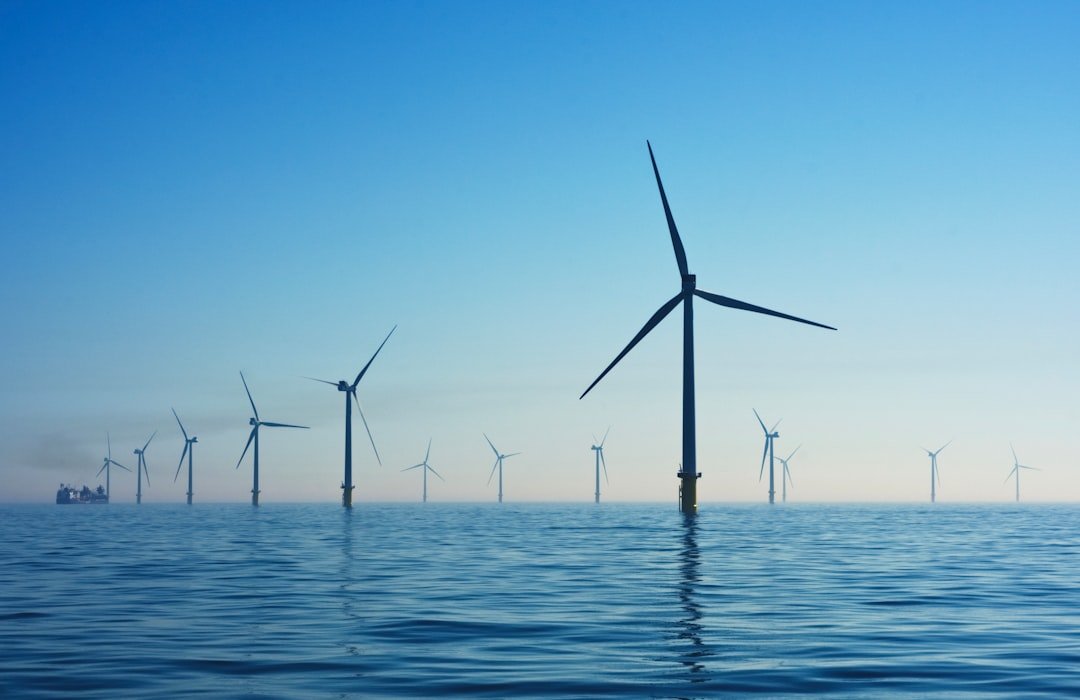A Complete Guide to Black Carbon Pollution Black carbon pollution is a serious but frequently disregarded environmental problem that has attracted more attention recently because of its significant effects on public health and climate change. Black carbon is made up of tiny particles that can float in the atmosphere for weeks or months after incomplete combustion of fossil fuels, biomass, and other organic materials. Black carbon is a powerful climate forcer that can affect weather patterns and contribute to global warming because of its comparatively short atmospheric lifetime, in contrast to carbon dioxide, which can persist for centuries. Black carbon is significant not only because it contributes to climate change but also because it poses major health risks.
Key Takeaways
- Black carbon pollution is a significant contributor to climate change and has detrimental effects on both global and local scales.
- The sources of black carbon pollution include incomplete combustion of fossil fuels, biomass burning, and industrial processes.
- Black carbon pollution has a significant impact on global warming by absorbing sunlight and heating the atmosphere.
- Regionally and locally, black carbon pollution can lead to reduced air quality, accelerated snow and ice melt, and changes in precipitation patterns.
- Mitigation strategies for black carbon pollution include reducing emissions from diesel engines, improving cookstove technology, and implementing policies to limit industrial emissions.
Heart issues, respiratory disorders, and other health issues can result from exposure to black carbon particles. Understanding the causes, effects, and potential remedies of black carbon pollution is becoming more and more important as urbanization and industrial activity continue to increase on a global scale. Examining the various facets of black carbon pollution, its role in climate change, and the methods that can be used to lessen its effects are the goals of this article. Because black carbon can absorb sunlight and heat the atmosphere, it is a key factor in climate change. It decreases the albedo effect, which causes snow and ice to absorb more heat and reflect less sunlight.
As a result of this phenomenon, glaciers & polar ice caps melt more quickly, raising sea levels & changing ecosystems. In the Arctic, where it has been found to be a major contributor to temperature increases, the warming effect of black carbon is most noticeable. It’s also impossible to overstate how much black carbon affects precipitation patterns & cloud formation.
It alters the cloud’s microphysical characteristics, which may result in variations in the amount & distribution of rainfall. Agriculture, water resources, and biodiversity may all be impacted in a cascade by these changes. In light of this, reducing black carbon pollution is essential for both preventing climate change and maintaining the stability of weather systems that are essential to communities internationally. Black carbon pollution comes from a wide range of sources, including both man-made and natural processes. Two significant contributors are industrial processes that burn fossil fuels and transportation, especially diesel engines.
| Metrics | Data |
|---|---|
| Black Carbon Emissions | 2.1 million metric tons per year |
| Global Temperature Increase | 0.5°C to 1.1°C |
| Glacial Melting | Accelerated by 30% |
| Arctic Ice Loss | 25-35% reduction |
Large volumes of black carbon are also released into the atmosphere during home heating and cooking using solid fuels like coal or wood. These practices are common in many developing nations because there is a lack of access to cleaner energy alternatives. Black carbon emissions are also caused by agricultural practices like burning biomass. It is common practice to purposefully burn crop residues in order to prepare fields for new plantings, but this method releases a significant amount of particulate matter into the atmosphere.
Wildfires are another natural source of black carbon, and they have become more common and intense as a result of climate change.
Black carbon pollution contributes to global warming in a significant and complex way. Compared to carbon dioxide, black carbon has a far greater warming potential over a brief period of time as a short-lived climate pollutant (SLCP).
According to studies, lowering emissions of black carbon may help mitigate climate change right away. In the short term, the rate of global warming might be considerably slowed down by addressing this pollutant.
For example, black carbon particles can affect precipitation patterns & cloud formation in ways that either exacerbate or lessen the effects of warming when they are present with other pollutants like sulfur dioxide.
This intricacy emphasizes the necessity of thorough climate models that take into consideration the interactions between different pollutants in order to more accurately forecast future climate conditions. The consequences of black carbon pollution are not consistent; they differ greatly between areas and locales. Residents of cities with dense populations and a lot of industrial activity frequently endure high levels of air pollution, which can cause major health problems like asthma and other respiratory disorders.
These environments’ high concentrations of black carbon have the potential to worsen already-existing health inequalities among vulnerable groups, such as the elderly and children. Rural regions, on the other hand, might experience distinct difficulties in relation to black carbon pollution. Communities that depend on conventional biomass for heating and cooking, for example, are frequently subjected to elevated levels of indoor air pollution due to emissions of black carbon. For women and children who spend a lot of time indoors, this exposure can result in long-term health issues and higher mortality rates.
To address these regional disparities, specific strategies that take into account local emissions sources & health effects are needed. Making the switch to cleaner sources of energy. Making the switch from solid fuel-based cooking & heating to cleaner energy sources is one practical way to lower black carbon pollution. In addition to lowering outdoor emissions, encouraging the use of clean cookstoves can greatly reduce indoor air pollution.
lowering transportation-related emissions. In the transportation industry, reducing black carbon emissions from diesel engines can be achieved by implementing cleaner fuels & technologies, such as electric or compressed natural gas-powered vehicles. Increasing Public Awareness & Enforcing Tougher Emissions Standards. Stricter industry-specific emissions regulations can help cut down on the amount of black carbon released into the atmosphere.
Campaigns to raise public awareness about the dangers of black carbon exposure to health can also be extremely effective in influencing behavior changes that lower emissions. Coordinated national and international policy responses are necessary due to the global nature of black carbon pollution. Countries must cooperate to enact laws that restrict emissions from important sources like industry, transportation, and agriculture.
Global accords such as the Climate and Clean Air Coalition (CCAC) offer forums for cooperation between countries aiming to tackle transient climate pollutants like black carbon. Black carbon reduction tactics can also be made more effective by incorporating them into larger climate action plans. Understanding how different pollutants are interrelated and how they affect climate change allows policymakers to create comprehensive frameworks that address several environmental issues at once. In addition to promoting innovation, this cooperative strategy promotes knowledge exchange between nations with different financial & technological capacities. Enhancing knowledge of black carbon pollution’s sources, effects, and interactions with other atmospheric components should be the main goal of future research.
Improved monitoring methods can yield more precise information about emissions and how they affect climate systems and air quality. Also, the development of successful mitigation strategies will depend on research into cutting-edge technologies for capturing or lowering black carbon emissions. To enable people and organizations to take part in initiatives to lower black carbon pollution, community-level action must also be taken.
In addition to advancing larger climate goals, grassroots projects that support sustainable practices—like planting trees or organizing community clean-up days—can cultivate a sense of pride in regional environmental problems. It is feasible to significantly reduce the negative effects of black carbon pollution on health and climate change by integrating scientific research, community involvement, & international collaboration. In summary, tackling black carbon pollution is a pressing issue that calls for coordinated action from several industries.
In order to create a cleaner environment and a healthier planet for future generations, society must comprehend its role in climate change, identify its sources, evaluate its effects, put mitigation strategies into place, promote international cooperation, and fund future research projects.
A related article to “Black carbon pollution: A hidden driver of climate change” is “Effects of Climate Change on Oceans.” This article discusses the impact of climate change on marine ecosystems and the various ways in which rising temperatures and ocean acidification are affecting marine life. To learn more about the effects of climate change on oceans, you can read the article here.
FAQs
What is black carbon pollution?
Black carbon pollution, also known as soot, is a type of particulate matter that is released into the atmosphere through incomplete combustion of fossil fuels, biofuels, and biomass. It is made up of tiny particles that are black in color and can remain in the atmosphere for days to weeks.
How does black carbon contribute to climate change?
Black carbon contributes to climate change in several ways. When it is released into the atmosphere, it can absorb sunlight and heat the surrounding air, leading to localized warming. Additionally, when black carbon particles settle on snow and ice, they reduce the surface albedo, causing the snow and ice to absorb more sunlight and melt faster.
What are the sources of black carbon pollution?
The primary sources of black carbon pollution include diesel engines, cookstoves, industrial processes, and open burning of biomass and agricultural waste. These activities release black carbon particles into the atmosphere, where they can have significant impacts on both human health and the environment.
What are the impacts of black carbon pollution on human health?
Exposure to black carbon pollution can have serious health effects, particularly on the respiratory and cardiovascular systems. Inhalation of black carbon particles can lead to respiratory diseases, such as asthma and bronchitis, and can also exacerbate existing conditions such as heart disease.
How can black carbon pollution be reduced?
There are several strategies for reducing black carbon pollution, including the use of cleaner technologies for cooking and heating, the implementation of emission controls on diesel engines, and the promotion of renewable energy sources. Additionally, improving the efficiency of industrial processes can help to reduce the amount of black carbon released into the atmosphere.



